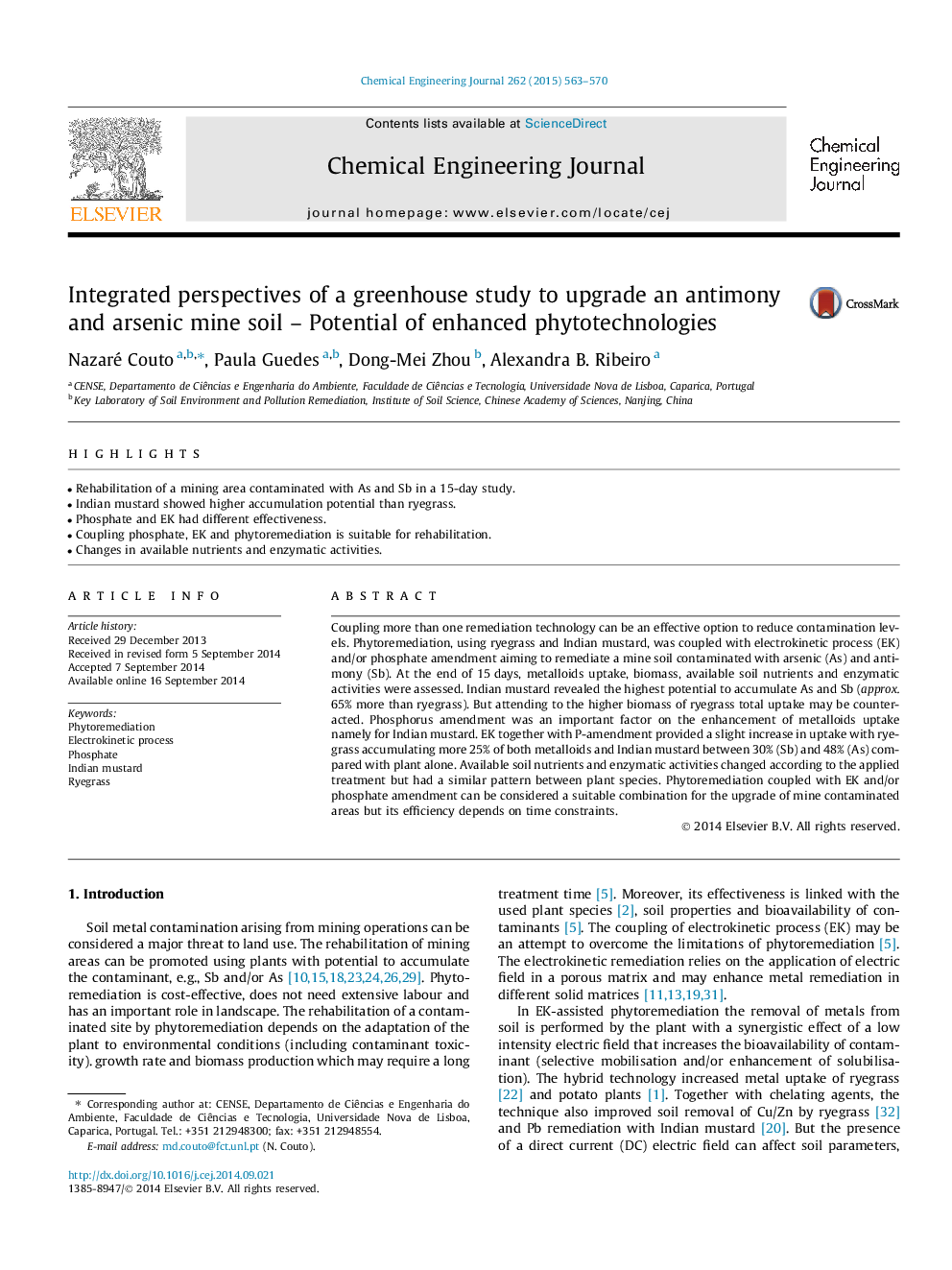| Article ID | Journal | Published Year | Pages | File Type |
|---|---|---|---|---|
| 6585478 | Chemical Engineering Journal | 2015 | 8 Pages |
Abstract
Coupling more than one remediation technology can be an effective option to reduce contamination levels. Phytoremediation, using ryegrass and Indian mustard, was coupled with electrokinetic process (EK) and/or phosphate amendment aiming to remediate a mine soil contaminated with arsenic (As) and antimony (Sb). At the end of 15Â days, metalloids uptake, biomass, available soil nutrients and enzymatic activities were assessed. Indian mustard revealed the highest potential to accumulate As and Sb (approx. 65% more than ryegrass). But attending to the higher biomass of ryegrass total uptake may be counteracted. Phosphorus amendment was an important factor on the enhancement of metalloids uptake namely for Indian mustard. EK together with P-amendment provided a slight increase in uptake with ryegrass accumulating more 25% of both metalloids and Indian mustard between 30% (Sb) and 48% (As) compared with plant alone. Available soil nutrients and enzymatic activities changed according to the applied treatment but had a similar pattern between plant species. Phytoremediation coupled with EK and/or phosphate amendment can be considered a suitable combination for the upgrade of mine contaminated areas but its efficiency depends on time constraints.
Related Topics
Physical Sciences and Engineering
Chemical Engineering
Chemical Engineering (General)
Authors
Nazaré Couto, Paula Guedes, Dong-Mei Zhou, Alexandra B. Ribeiro,
